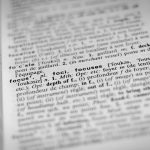During World War 2 there was an obvious need for the military to speed up the language learning process, so that the personnel could acquire language skills quickly.
The audio-lingual method (ALM), also known as the “army method”, was developed in 1946 in the US, just after the war. It was an attempt to speed up language learning by drilling grammatical structures. It used research developed during the war that suggested that this method brings big enhancements.
- It was designed around the behaviourist theory, so repetition and habit formation are central. The teacher is in control and reinforces the correct responses.The goal is to successfully practice grammatical structures enough times to allow the student to use them instinctively.
- As an “army method”, it included very intensive repetitions of grammatical structures, mimicking and imitating. The drills were really military.
- The emphasis was on speech, but it was also non-communicative. It was not important to understand the words, but to acquire the structures and patterns.
While it was widely adopted and implemented in language classrooms, especially in the 1950s and 1960s, its effectiveness has been questioned, mainly because of the disconnect from communication which resulted in students learning language patterns without a clear understanding of their communicative functions.
It also influenced subsequent language teaching methodologies, and nowadays every language learning method has some sort of exercise based on ALM.
For modern language learners that means one thing: some drilling of grammatical structures must be in your repetiore of exercises.








